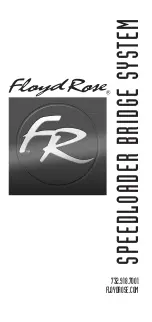
Practical Instrument Electronics
82 East Main Street Suite 3.14 • Webster, NY 14580 Tel: 585.872.9350 • Fax: 585.872.2638 • [email protected] • www.piecal.com
Page 10
Warranty
Our equipment is warranted against defective material and workmanship (excluding batteries) for a
period of three years from the date of shipment. Claims under warranty can be made by returning
the equipment prepaid to our factory. The equipment will be repaired, replaced or adjusted at our
option. The liability of Practical Instrument Electronics (PIE) is restricted to that given under our
warranty. No responsibility is accepted for damage, loss or other expense incurred through sale or
use of our equipment. Under no condition shall Practical Instrument Electronics, Inc. be liable for any
special, incidental or consequential damage.
SETTING UP VALVES
When setting up a valve it is important to correctly set the end stops. Use the PIECAL 434 to supply
the 4 to 20 mA control signal to stroke the valve. Select “SOURCE” and the PIECAL 434 will use the
internal power source for outputting current or switch to 2-WIRE SIMULATOR to stroke a valve using
any pre-existing installed loop power supply as the power source.
Example:
1) Disconnect the 4-20 mA control wires from the Current-to Pressure (I/P) converter or the actuator.
2) Connect the PIECAL 434 following the connection diagrams on the previous pages for Simulate
2-Wire Transmitters
3) Move the EZ-CHECK™ switch
e
to
“4.00 mA”/”0.0%”
and adjust the fully closed stop on the
actuator.
4) Turn the PIECAL 434’s knob
r
slowly counterclockwise and verify that the actuator and valve
don’t move. Repeat steps 3 & 4 until no movement is detected.
5) Move the EZ-CHECK™ switch
e
to
DIAL
and quickly back to
“4.00 mA”/”0.0%”
then turn the
PIECAL 434’s knob
r
clockwise. The actuator and valve should begin to move.
6) Move the EZ-CHECK™ switch
e
to
“20.00 mA”/”100.0%”
and adjust the fully open stop on the
actuator.
7) Turn the PIECAL 434’s knob
r
slowly clockwise and verify that the actuator and valve don’t
move. Repeat steps 6 & 7 until no movement is detected.
8) Move the EZ-CHECK™ switch
e
to
DIAL
and quickly back to
“20.00 mA”/”100.0%”
then turn
the PIECAL 434’s knob counterclockwise. The actuator and valve should begin to move
.
Stroking Valves
Additional Information
This product is calibrated on equipment traceable to NIST and includes a Certificate of Calibration.
Test Data is available for an additional charge.
Practical Instrument Electronics recommends a calibration interval of one year. Contact your local
representative for recalibration and repair services.
www.
.com
1.800.561.8187






























